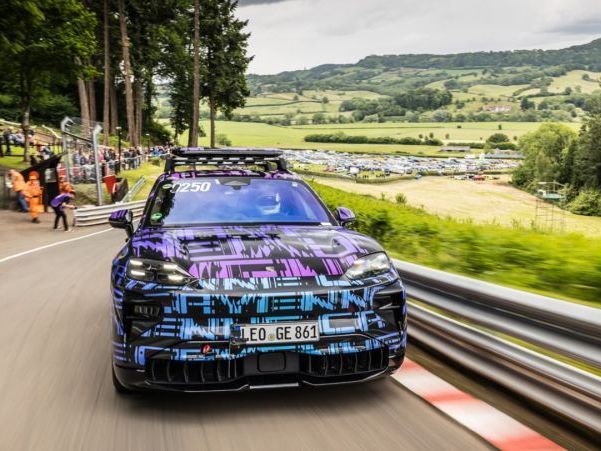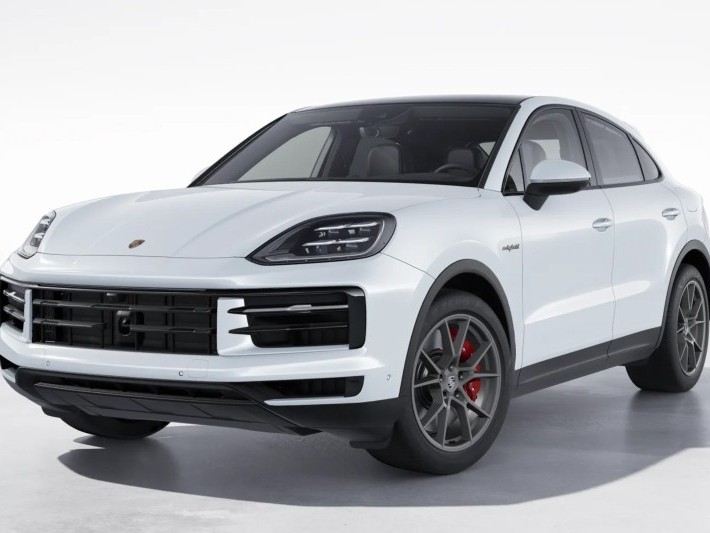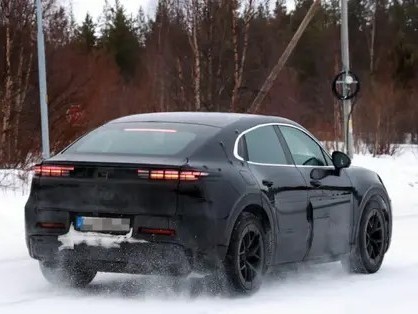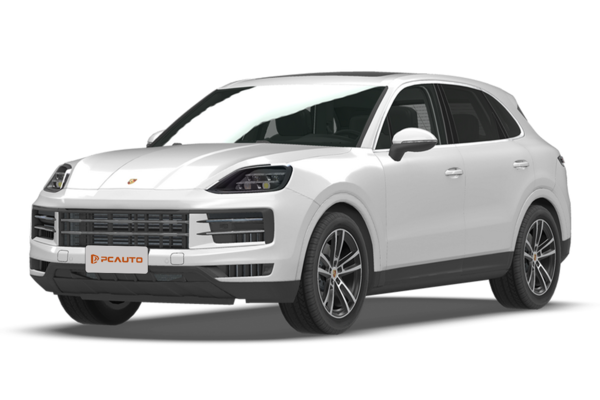Q
What is the Weel Size of Porsche Cayenne?
The wheel sizes of the Porsche Cayenne vary depending on the model year and configuration. The common original - factory wheel sizes range from 19 inches to 22 inches. For example, the base models usually come with 19 - or 20 - inch wheels, while high - performance versions like the Cayenne Turbo GT may be equipped with large - sized 21 - or 22 - inch wheels. The specific sizes can be adjusted according to the optional configurations when purchasing a car.
For Malaysian users, local road conditions need to be considered when choosing wheels. Although larger wheels can enhance handling and visual effects, thinner tires may increase the risk of tire blow - outs on rough roads. On the other hand, smaller wheels with thicker tires are more suitable for long - distance driving or areas with poor road conditions.
In addition, when modifying wheels, it is necessary to ensure compliance with the regulations of Malaysia's JPJ (Road Transport Department). This includes not exceeding the maximum allowable size of the original factory and maintaining compatibility with the original braking system. It is also recommended to purchase wheels through official Porsche or certified channels to ensure quality and safety.
Special Disclaimer: This content is published by users and does not represent the views or position of PCauto.
Related Q&A
Q
Is a Porsche Cayenne good for long drive?
The Porsche Cayenne stands out as a luxury SUV that truly excels on long drives, making it a perfect fit for Malaysia's roads and climate. Under the hood, its efficient turbocharged engine paired with the 8-speed Tiptronic S transmission delivers smooth power delivery and decent fuel economy, keeping things quiet and comfortable even when cruising at highway speeds. The standard air suspension system automatically adjusts damping based on road conditions, taking long-distance comfort up another notch.
What really helps on those extended journeys is the Cayenne's ergonomic seat design, which minimizes fatigue during hours behind the wheel. Throw in advanced driver assists like adaptive cruise control and lane-keeping, and it's clear this SUV is built to reduce the strain of long drives. For Malaysian drivers, the Cayenne's air-con system is a beast—blasting cold air fast enough to tackle our tropical heat with ease. The generous fuel tank also means fewer stops at the pump, which is a big plus on those highway stretches.
Space-wise, the Cayenne doesn't disappoint either. Rear legroom and boot capacity are class-leading, easily swallowing all the luggage for a family trip. If you're watching fuel costs, the hybrid variant ups the efficiency game even more. Sure, luxury car maintenance isn't cheap, but Porsche's service network in Malaysia is solid, giving owners peace of mind. All things considered, if you're someone who regularly hits the North-South Expressway, the Cayenne is definitely worth a spot on your shortlist.
Q
When did Porsche stop making Cayenne?
The Porsche Cayenne, the brand's luxury SUV, is still in production and going strong. The current iteration is the third generation (codenamed PO536), which received a mid - cycle refresh in 2023. This update brought with it a revised plug - in hybrid system and a brand - new interior design. In the Malaysian market, the Cayenne has long been a top pick among high - performance SUVs. Local buyers can choose from a variety of powertrains, including the 3.0T V6, 2.9T twin - turbo V6, and the range - topping 4.0T V8. For those who desire a sportier look, the Coupe variant is also available. Porsche is steadily ramping up its electrification efforts in Southeast Asia, and Malaysian customers should keep an eye on the Cayenne E - Hybrid. With an electric - only range of 80 kilometers (WLTP), it's well suited for daily city driving. Thanks to the Malaysian government's ongoing tax incentives for hybrid vehicles, these electrified versions are highly cost - effective. For the latest specs and pricing, it's always best to check directly with official Porsche channels.
Q
What engine is in the Cayenne 2025?
The 2025 Porsche Cayenne hits the Malaysian market with a solid lineup of powertrains to suit different tastes. There's the efficient 3.0-liter V6 turbo kicking out 353 horsepower, a beefier 2.9-liter V6 twin-turbo in the Cayenne S good for 474 horses, and at the top of the heap, the 4.0-liter V8 twin-turbo in the Cayenne Turbo GT that cranks out a whopping 631 hp. Then there are the plug-in hybrid options, like the Cayenne E-Hybrid, which pair either a 2.0-liter or 3.0-liter engine with an electric motor for a greener drive. These PHEVs offer around 40-60 km of all-electric range, making them pretty ideal for Malaysian city commutes. All these engines are mated to an 8-speed Tiptronic S transmission, ensuring smooth shifts and decent fuel economy. What's cool about Porsche's engine tech here is how it balances performance and efficiency. The V8, for example, uses cylinder deactivation, automatically switching to four-cylinder mode under light loads to save fuel. And the hybrids, of course, let you cruise on pure electric to cut down on emissions. For Malaysian buyers, it really comes down to daily needs. If you're often hitting the highway or crave that sporty feel, the V6 or V8 versions are the way to go. But if you're big on eco-friendliness and fuel efficiency, the hybrid models should be right up your alley.
Q
What is the battery in the Porsche Cayenne 2025?
The 2025 Porsche Cayenne is expected to come equipped with advanced lithium-ion battery packs, though exact specs will likely vary depending on the trim—think base, plug-in hybrid, or high-performance models. Your standard gas-powered Cayenne will stick with the tried-and-true 12V AGM battery, but the plug-in hybrid variants are where things get interesting, packing higher-voltage lithium-ion units to power that electric motor.
Now, a heads-up for Malaysian drivers: our tropical heat can be tough on batteries. The high temps tend to speed up electrolyte evaporation, so make it a habit to check your battery's condition regularly. And when it comes time for replacements, stick with Porsche OEM parts—trust me, compatibility is key here.
Porsche's smart energy management system is a solid plus too; it optimizes charging and discharging to help squeeze more life out of that battery. If you're eyeing the hybrid, expect a bump in all-electric range compared to the previous gen, but remember, real-world numbers will hinge on local road conditions and how you drive—stop-and-go city traffic versus highway cruising makes a big difference.
For battery care, avoid leaving the car parked for super long stretches until it's drained; that's a quick way to kill a battery. And don't sleep on those preventive checks at your Porsche service center—their diagnostic tools can catch issues before they turn into headaches. Keep these tips in mind, and your Cayenne's battery should stay in the game for the long haul.
Q
Will there be a 2025 Porsche Cayman?
From what we're hearing, Porsche is indeed gearing up to launch an all-new Cayman in 2025 as part of its broader electrification strategy. Word on the street is this new model will likely ditch the combustion engine in favor of a pure electric powertrain, staying true to the 718 lineage's sports car DNA while cranking up the performance and tech to meet global demand for high-performance electric sports cars.
For Malaysian enthusiasts, there's a good chance this EV Cayman will make its way here through official channels. However, we'll have to wait for Porsche Asia Pacific to confirm exact launch timings and local specifications.
What's really exciting is that Porsche isn't starting from scratch with EVs. They've already racked up plenty of experience with the Taycan and the upcoming electric Macan, so expectations are high for this electric Cayman – especially when it comes to range figures and fast-charging capabilities, which could be pretty impressive.
Malaysian buyers should keep an eye on updates from their local Porsche centers. It's also worth watching how government EV policies shape up – things like import tax breaks or improvements to charging infrastructure could have a real impact on both the car's final price tag and how practical it is to live with.
Q
What's the fastest 2025 Porsche?
The fastest Porsche model of 2025 is the all-new Taycan Turbo S. This pure electric sports car, armed with its potent dual-motor all-wheel-drive setup, cranks out a whopping 1,000 horsepower in overboost mode. It rockets from 0-100 km/h in a mere 2.3 seconds and tops out at 320 km/h, making it Porsche's quickest production car to date.
Under the skin, the Taycan Turbo S packs an advanced 800V high-voltage battery system. It's not just about brute force, though – this thing supports 270 kW fast charging, meaning you can get around 400 km of range in just 15 minutes. Perfect for those long hauls up and down Malaysia's North-South Expressway.
What's really impressive is how Porsche's EV tech innovation lets it deliver mind-blowing performance without sacrificing everyday usability. Take the adaptive air suspension, for example – it automatically adjusts to the road conditions, ensuring a comfortable ride no matter what Malaysian roads throw at it.
For speed-craving Malaysian Porsche fans, the Taycan Turbo S isn't just a statement of Porsche's performance prowess in the electric age; it's a glimpse into the future of supercars. And to sweeten the deal, Porsche Centre Malaysia offers exclusive charging networks and after-sales service, so owners can hit the road with total peace of mind.
Q
What's the cost of a 2025 Porsche?
Porsche hasn't officially announced their 2025 model prices for Malaysia just yet, but we can get a ballpark figure by looking at the 2024 lineup. For example, the entry-level Macan is expected to start around RM400,000, while the 911 Carrera will likely push north of RM900,000. Of course, the final number will dance around a bit depending on the specific trim, the options you tick, and even currency exchange rates.
Let's not forget, in Malaysia, imported car prices typically bundle in duties, sales tax, and registration fees – these can add a pretty penny to the sticker price. If you're seriously considering one, your best bet is to keep an eye on Porsche Malaysia's official website or hook up with an authorized dealer to get the most accurate quote.
Porsche's reputation is built on that legendary driving feel and top-notch interiors. Whether you're looking at the SUVs like the Cayenne and Macan, the iconic 911 sports cars, or even the all-electric Taycan, they all blend cutting-edge tech with that timeless Porsche design language. Malaysia's tropical weather and mixed road conditions can be tough on cars, but Porsche's all-wheel-drive systems and adaptive suspension setups handle it like a champ. Plus, their after-sales service network covers all the major cities, so you can have peace of mind knowing support is there when you need it.
Q
How much should I pay for a 2025 Porsche Cayenne?
Pricing for the 2025 Porsche Cayenne in Malaysia is expected to vary depending on configuration and optional extras. Looking at the current Cayenne, which starts roughly between RM600,000 and RM700,000 before any added options, the new model might see slight adjustments due to exchange rates, import duties, and equipment upgrades. Your best bet for the latest figures is to reach out directly to authorized Porsche dealers in Malaysia, like Porsche Centre Kuala Lumpur or Johor Bahru. With luxury cars, custom options—think wheels, interior materials, or driver assistance systems—can really swing the final price tag, so dealerships will have the most accurate breakdown for your build.
A big factor keeping Cayenne prices on the higher side in Malaysia is the import duty structure, which can add up to 30-50% to the car's cost when you factor in tariffs, consumption tax, and sales tax. If you're planning to hold onto your Cayenne for the long haul, it's worth checking out Porsche Malaysia's official warranty coverage—typically 5 years with unlimited mileage—and their service packages. These can be smart investments to help manage long-term maintenance costs.
Sure, rivals like the BMW X5 or Mercedes-Benz GLE might come in with slightly lower price tags in the Malaysian market, but Porsche's brand cachet and the sheer driving dynamics it delivers remain the Cayenne's stand-out strengths.
Q
What transmission is in the 2025 Porsche Cayenne?
The 2025 Porsche Cayenne offers Malaysian buyers a variety of transmission options, each tailored to specific models and powertrains. The base Cayenne and Cayenne S are expected to feature the refined 8-speed Tiptronic S automatic transmission, celebrated for its smooth shifts and quick reflexes—striking that perfect balance between daily comfort and spirited performance. Step up to the high-performance Cayenne Turbo GT, and you'll likely find the more aggressive 8-speed PDK dual-clutch gearbox under the hood, engineered specifically for handling massive torque and delivering lightning-fast shift times. For the plug-in hybrids, like the Cayenne E-Hybrid, Porsche fits an 8-speed automatic transmission specially tuned for the hybrid system, maximizing the synergy between electric and combustion power for optimal efficiency.
For Malaysian consumers, Porsche's transmission tech doesn't just prioritize driving thrills; it's also built to withstand our tropical climate. Think beefed-up cooling systems and enhanced sealing to keep things running smoothly when the mercury rises. If you're in the market, pick based on your driving style: the Tiptronic S is your go-to for relaxed, comfortable commutes, while the PDK will appeal to those craving that track-inspired edge. And regardless of which you choose, all transmissions come with Porsche's "Sport Response" mode, giving you an instant boost in power delivery—perfect for attacking Malaysia's twisty backroads or cruising confidently on the highway.
Q
What is the range of the 2025 Cayenne Hybrid?
The 2025 Cayenne Hybrid is expected to deliver an all-electric range of 60 to 80 kilometers, though actual figures may vary based on driving conditions, battery state, and vehicle specifications. This plug-in hybrid model pairs a 3.0-liter V6 turbocharged engine with an electric motor, churning out a combined system output of around 460 horsepower—making it equally adept at city commutes and longer journeys. For Malaysian buyers, its fuel efficiency translates to noticeable savings at the pump, especially handy for navigating traffic-heavy cities like Kuala Lumpur. What’s notable is that plug-in hybrids in Malaysia qualify for tax incentives, including import duty and sales tax exemptions, plus subsidies for home charging installation. If you’re mostly doing short trips, lean into electric mode to maximize savings, and keeping up with high-voltage battery maintenance will help extend its lifespan. These luxury plug-in hybrid SUVs hold up well in tropical climates, but it’s wise to keep the battery around 50% charge if you’re leaving it parked for extended periods.
Latest Q&A
Q
How many miles per gallon does the Dodge Charger achieve?
The Dodge Charger's fuel economy varies depending on the specific trim and engine setup. Take the rear-wheel-drive model with the 3.6L V6, for example—it'll sip around 19-23 MPG in the city and stretch to 30-31 MPG on the highway. Step up to the high-performance 6.4L V8 HEMI, and you're looking at roughly 15-17 MPG in urban driving and 24-25 MPG out on the open road. If you opt for the even more beastly 6.2L supercharged V8 in the Charger SRT Hellcat, city fuel economy drops to about 12-13 MPG, with highway figures coming in at 21-22 MPG.
For our readers in Malaysia, keep in mind these numbers are based on U.S. EPA testing standards. Real-world fuel efficiency can vary depending on your driving style, road conditions, and fuel quality. Since Malaysia uses the metric system, you can convert these MPG figures to liters per 100 kilometers for easier reference (1 MPG ≈ 0.425 km/L).
Also, hybrid or future electric versions could offer better efficiency down the line. Before making a purchase, it's smart to check local specifications and tax policies—big-displacement engines might mean higher road taxes in Malaysia. And don't forget, regular maintenance and keeping your tires properly inflated can also help optimize fuel economy.
Q
When was Dodge Charger released?
The Dodge Charger first hit the scene back in 1966, and man, did it make a statement. As a classic American muscle car, it quickly became the poster child for power and style. That first-gen model packed some serious V8 heat, like the legendary 7.0-liter Hemi, setting the bar high for what a high-performance ride should be.
Over in Malaysia, you don't see Chargers cruising around every day—they're pretty rare birds. But when you do spot one, heads turn. Its bold, in-your-face design and brute force under the hood still hook a solid group of local gearheads.
Through the years, the Charger's gone through some major evolutions. The latest model? It's like they took that classic muscle soul and injected it with 21st-century tech. We're talking advanced driver-assistance systems, more efficient powertrains—think 3.6L V6 and 5.7L V8 options—and then there's the beastly Hellcat trim, rocking a 6.2L supercharged V8 that cranks out over 700 horsepower. Insane, right?
For Malaysian car fans, the Charger isn't just a car—it's a symbol of that wild, unapologetic American muscle spirit. Yeah, the local market's mostly dominated by Japanese and European rides, but you'll catch the occasional imported Charger rolling around, especially in enthusiast circles. Whether it's a vintage classic or a modern rocket ship, the Charger's history and raw performance have cemented its spot as an icon in car culture. And let's be real—either way, it's all about that pure, unfiltered American driving thrill.
Q
What is the sport traction control of the Dodge Charger?
In the Dodge Charger, Traction Control Sport is an electronic stability feature engineered specifically to amp up the driving fun. It dials back the traction control intervention when you're pushing the car hard, letting the rear wheels break loose a little in a controlled way. This helps you get more agile turn-in or even a little power slide, all while still keeping that baseline safety net in place.
You’ll usually find a button on the center console to kick it on. It’s right at home on a track or closed course, but for your daily grind on the streets, sticking with the default mode is the smart call for safety. Now, for our friends in Malaysia, those wet, rainy roads can up the ante on wheel spin, so definitely use this feature with a bit of extra caution.
Here’s the lowdown on how it works: sensors keep an eye on wheel speed differences, and if things start to get sketchy, the system automatically tweaks engine power or hits the brakes to keep you from losing control. Different brands slap different names on similar setups—like ESC Sport or VDC Off—but they’re all chasing that same sweet spot between safety and raw handling.
If you’re hungry to dive deeper into car electronics, check out stuff like electronic limited-slip differentials or torque vectoring. They’re all part of the tech package that makes modern performance cars handle as good as they do.
Q
How many miles can Dodge Charger travel?
For Malaysian consumers wondering about the Dodge Charger's durability, this American muscle car typically clocks in 320,000 to 480,000 kilometers over its lifespan—mileage that really hinges on how well you maintain it and your driving habits. With Malaysia's hot and rainy climate, make sure to pay extra attention to regular checks on the cooling system and rubber components. Stick to the manufacturer's recommended service interval of 5,000 to 7,500 miles (around 8,000 to 12,000 km), and using full synthetic oil will definitely help extend the engine's life. The Charger's Hemi V8 is known for being tough as nails, but stop-and-go city traffic can wear out the clutch faster. So, if you're regularly driving in congested areas like KL, consider shortening the gearbox oil change interval a bit. It's worth noting that the right-hand-drive version in Malaysia shares basically the same mechanicals as left-hand-drive models, and parts supply is solid through authorized dealers, keeping long-term ownership costs manageable. If you're eyeing a used model, focus on checking the electronics in post-2015 cars—their Uconnect infotainment systems can get laggy if not maintained, but that doesn't hurt the overall mechanical reliability of the car.
Q
How to install the cold air intake on Dodge Charger?
Installing a cold air intake system on your Dodge Charger is a solid mod that can boost both engine performance and fuel efficiency. First off, you’ll need to grab the right cold air intake kit—make sure it’s compatible with your Charger’s engine model. Here in Malaysia’s hot climate, go for intake tubes made from heat-resistant materials like aluminum alloy or high-density plastic; they’ll hold up better over time. The installation steps involve yanking out the stock air filter box, disconnecting the sensor plugs, fitting the new intake piping and high-flow air filter, and making sure all connections are sealed tight to keep unfiltered air out of the engine. Once it’s all set up, check if the check engine light comes on—if it does, you might need an OBD2 scanner to reset the ECU so it adjusts to the new air intake volume.
Basically, a cold air intake works by lowering the temperature of the incoming air, which increases oxygen density and improves combustion efficiency. But heads up: during Malaysia’s rainy season, you’ll want to add a waterproof shield to prevent the engine from sucking in water. Also, keep in mind that mods like this could affect your factory warranty, so it’s smart to check with an authorized service center before diving in. If you’re chasing even better results, pairing it with an exhaust system upgrade can help, but make sure everything stays within JPJ’s noise and emissions regulations.
View MoreRelated News

Porsche launches wireless charging technology, while Tesla announces the cancellation of Cybertruck-related development
MichaelSep 11, 2025

Porsche Cayenne EV will offer wireless charging functionality, eliminating the need for heavy charging cables
JamesSep 5, 2025

Porsche Tests Second-Gen Cayenne Electric, Aims to Rival Model X
JohnJul 16, 2025

Porsche Cayenne: Redefining Practicality with Spaciousness and Versatility
RobertMay 12, 2025

Porsche is about to launch an electric version of Cayenne, spy shots of the Swedish test have been exposed
AshleyApr 2, 2025
View More


















Pros
Cons